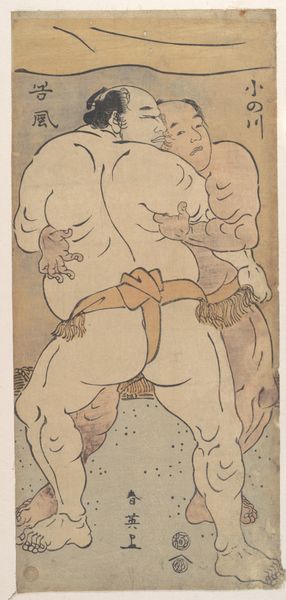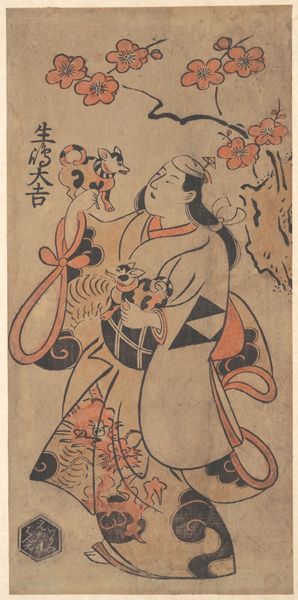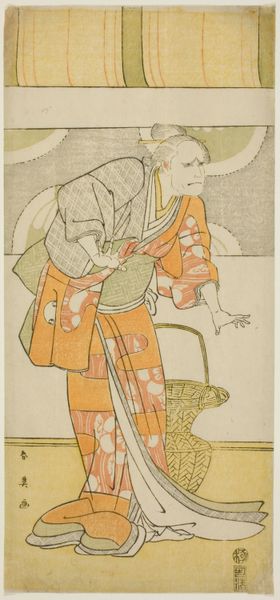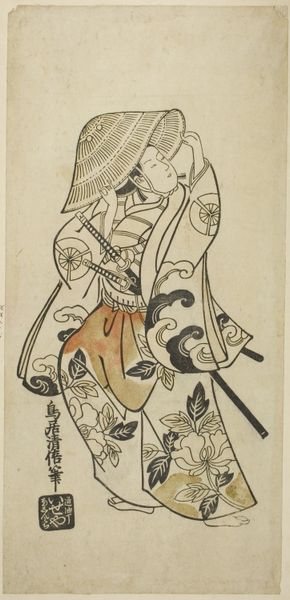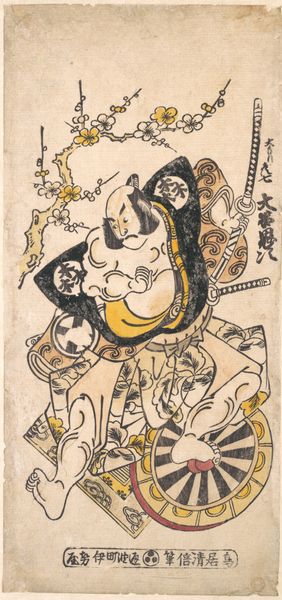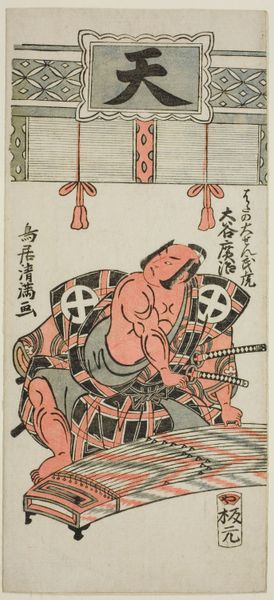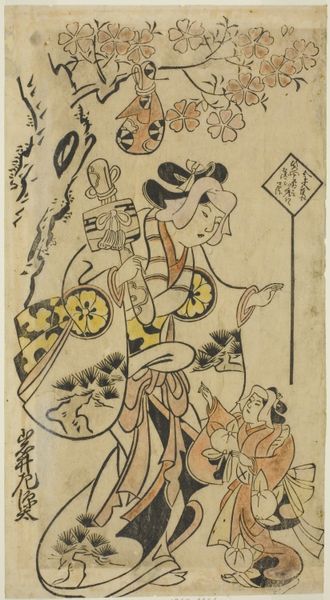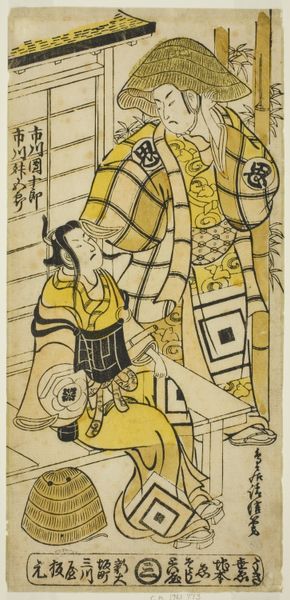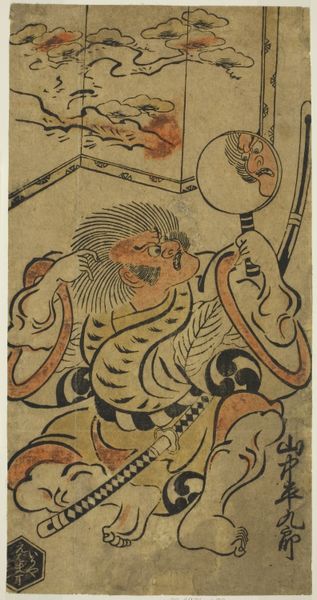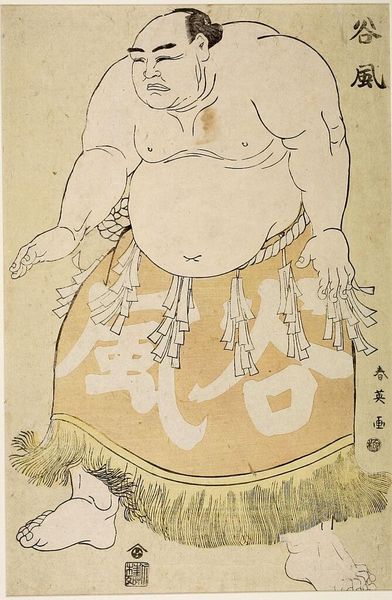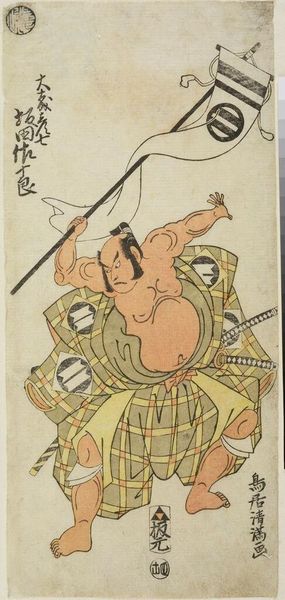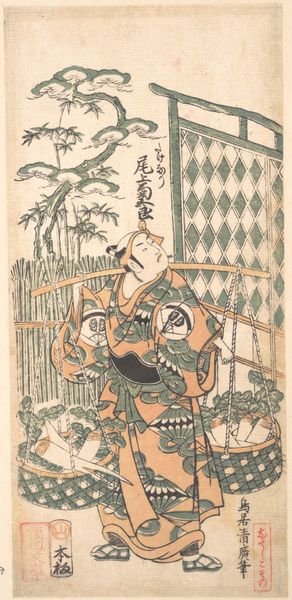
print, ink, woodblock-print, mezzotint
#
portrait
# print
#
ukiyo-e
#
figuration
#
ink
#
woodblock-print
#
mezzotint
#
genre-painting
#
erotic-art
Dimensions: 14 × 9 1/4 in. (35.5 × 23.5 cm) (image, sheet, vertical ōban)
Copyright: Public Domain
Editor: This woodblock print, "Wrestler Shiranui Nagiemon from Higo Province," created in 1843 by Utagawa Kunisada, presents quite a powerful figure. The wrestler's pose and immense size fill the frame. The print itself is fascinating, especially the detail in the wrestler's garb and physique, but what exactly were these prints used for, and what sort of cultural role did they fulfill at the time? Curator: That’s a fantastic question. Ukiyo-e prints like these served multiple purposes within 19th-century Japanese society. Mass production allowed for affordable art that depicted popular figures like Kabuki actors, courtesans, and, of course, sumo wrestlers like Shiranui Nagiemon. These images helped solidify their fame. Think of them as celebrity posters but interwoven within social and political undercurrents. Did the popularity of such figures relate to the commercial success of these prints and how it further spread socio-political ideas? Editor: That makes perfect sense! Almost like social media before the internet! It's amazing how a print like this could shape perceptions and amplify celebrity culture. But were there other, perhaps less visible, impacts that woodblock prints had on shaping cultural views during that era? Curator: Absolutely. Beyond simple admiration, ukiyo-e prints acted as visual vehicles for cultural values. They often subtly conveyed moral lessons, celebrated certain behaviors, or promoted specific regional identities. Also, censorship laws influenced what could and could not be depicted, leading to a symbolic language often layered within the print. Editor: That is enlightening. I now see how seemingly straightforward prints can hold a complex mirror up to their society! I had considered it just as a nice picture. Curator: Exactly! Thinking about art’s wider cultural role always opens up a new way of considering how and why such images become so very popular.
Comments
minneapolisinstituteofart almost 2 years ago
⋮
This three-sheet set of prints represents the dohyō-ir, or ring-entering ceremony, at the beginning of a tournament day. Takaneyama appears on the left as the tachi-mochi, or sword carrier, one of the two attendants of the wrestler who performs the ceremony. On the right sits Kurokumo, who functions as the “dew sweeper” (tsuyuharai), the attendant who in ancient times would clear the path for the wrestlers. The ceremony itself is performed by a yokozuna, a high-ranking wrestler, in this case Shiranui, in the center. The yokozuna always performs the same moves in the center of the ring, including raising his right foot up high followed by his left.
Join the conversation
Join millions of artists and users on Artera today and experience the ultimate creative platform.
